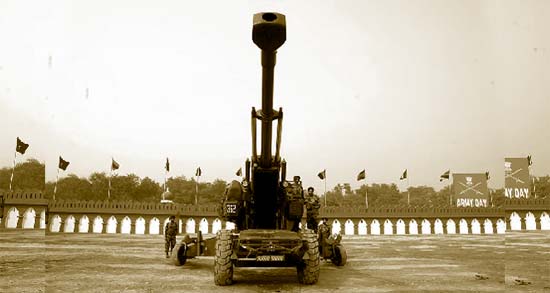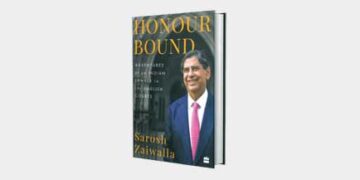Team Blitz India
The trial was set for 19 July 1990 in court 11 of the High Court. It was clear that this was no ordinary case. From early in the morning a large crowd of Indian teenagers gathered outside in the Strand, holding up placards and jostling with each other to catch a glimpse of Amitabh Bachchan. He had flown to London to testify and face cross-examination for the sake of Ajitabh, travelling with their mother, Teji, who had once worked as an assistant to Jawaharlal Nehru, the first prime minister of India.
The London-based Indian journalists who had also gathered in force had extensively previewed the event as a reallife version of the sort of courtroom scene which often forms the climax to a Hindi film. As one put it, Amitabh’s arrival was like the greatest of Indian stars lifted from the tinsel world of Bollywood into the reallife world of legal drama.
What neither the crowd nor the journalists knew was that my team and the lawyers for Dagens Nyheter had been hard at work to get ready for the trial. We had acquired information, which remains confidential for legal reasons, about one of the witnesses who was to give evidence for the Swedish paper. This was so damaging that it effectively made it impossible for Carter-Ruck to prove justification, which was their defence. They decided they had no choice but to settle. A clue was provided by the fact that in addition to solicitors from Carter-Ruck and their counsel David Eady, the paper’s Swedish legal adviser, Peter Danowsky, had flown in to London to agree to the deal. But none of the journalists covering the story noticed this.
In a big trial we normally arrive fortyfive minutes early to say hello to our opponents. It is very civil and there is no reason for it not to be. After exchanging documents and statements, you know what they are going to say, and they know what we are going to say.
In legal actions these days there are no courtroom surprises of the sort you see in films or read about in Perry Mason books.
On this occasion, though, there was a surprise. At the door of the court, a CarterRuck solicitor approached me, and I realized the settlement was on. Amitabh and Ajitabh were next to me as we spoke; they could only communicate with Carter-Ruck through me. Carter-Ruck stated that they were willing to settle and agreed to apologize to Ajitabh in court and pay a small sum in damages.
As is standard practice when such settlements are made, a statement is read out in court which is agreed between the two sides. I inserted a comment to the effect that the allegation against the Bachchans had been made by someone close to the then prime minister of India, V.P. Singh. That was the killer point.
The insertion read, a remarkable feature of this case is that the defendants received the information upon which they based their story from sources close to the present Government of India.’ I knew this would point the finger at Singh and help the Bachchans.
It was also true.
Reporters gathered in the wood-panelled courtroom noticed I was conferring with Carter-Ruck. As an India Today correspondent described it, ‘English and Swedish lawyers discussed strategies in conspiratorial whispers.’ The truth only became clear when Judge MacPherson entered the courtroom, the crowd settled down, and David Eady, appearing for the defendant, rose to speak. The fact that he addressed the court first rather than Grey was an initial indication that something unusual was afoot. Since Ajitabh had brought the case, Grey would have been expected to open it and then let Eady respond.
Instead, and to gasps from the gallery, Eady read out an apology from Dagens Nyheter to Ajitabh for libelling him. He explained that this was being tendered on the authority of the newspaper’s editor, Christina Jutterstrom, and its Swedish legal adviser, Peter Danowsky.
The statement said that as a result of ‘further information’ obtained by Danowsky from Switzerland that morning, he and Jutterstrom were ‘now completely satisfied that they were misled earlier this year in trusting information from persons directly involved in the investigations into the Bofors transaction on behalf of the Indian government’.
India Today would later describe Eady as offering ‘an apology that amounted to ‘an abject surrender to Ajitabh’. Judge MacPherson ruled that damages be paid to Ajitabh. After an adjournment, the court reassembled to hear from Charles Grey.
He said the allegations by Dagens Nyheter had not only caused distress to Ajitabh but ‘also caused embarrassment to Rajiv Gandhi’, and in order to soothe this distress Ajitabh had been awarded ‘substantial’ damages and costs. As is usual in such settlements, the figure I had negotiated was not specified. It is usually a reasonably modest sum, but rhe public were not to know that.
As the judge walked out of the chamber, Amitabh fended off the hordes of autograph hunters to give his mother a huge hug. He told the gathered journalists, ‘I came here looking for a fight. But this film ended with the credit titles. The Bachchan brothers have won.
‘Swedish newspaper apologises for naming Ajitabh Bachchan in Bofors case’, London: India Today, 15 August 1990. For four and a half years nobody believed us. Finally, the truth has come out.’ In fact, the truth about what had happened behind the scenes to force the Swedish paper to settle did not come out and never will.
India Today reported that informed sources said Ajitabh’s counsel submitted a report by a leading British investigative agency saying that the entire story about the sixth Swiss bank account was ‘fabricated’. The report claimed that no one – not even the relevant Swiss magistrate — would have known exactly which accounts were frozen when the Dagens story appeared. The Swiss magistrate who ordered the freezing of the accounts on the basis of the Indian first information report (FIR) went on military duty the day after issuing his order and returned only three weeks later, the agency reported.
For my part, client privilege means I can never disclose the events that forced Dagens Nyheter to settle or the details of the ‘conspiratorial whispers’ in court 11 on the morning of the trial.The triumphant Bachchans accompanied me back to my office.
Amitabh had brought along with him Vir Sanghvi, a prominent Indian journalist, and gave him the story. I saw at first-hand how to manage the media. Sanghvi called editors of various newspapers all over India from my office and Amitabh gave interviews, which were plastered all over the Indian press. After that, it was a familiar ride in Ajitabh’s Lexus to my home in Wimbledon, where the Bachchan brothers, Renoo and I celebrated over a happy dinner.
In New Delhi, the Bachchans’ enemies did their best to put a negative spin on the story. As India Today reported, ‘…
official sources admitted that the apology and the Swiss authorities’ rejection of the Indian letter rogatory seeking details of those suspected to be holding numbered bank accounts with money from the Bofors pay-offs were setbacks. But they insisted that the London case was a victory against a foreign newspaper, not against the Indian government or investigative agencies [which] are still confident of a breakthrough. CBI Director Rajendra Shekhar led a team to Switzerland to deliver a new letter rogatory and has been given a free hand to hire the best lawyers.’ A second libel case followed. We had decided to go after India Abroad News Service (IANS), which, like the Press Trust of India, was a wire service operating out of New York and New Delhi and reported news without comment.
At the trial, Amitabh, Ajitabh and his wife Ramola said under oath that they had been made victims by Indian prime minister V.P. Singh. The jury reached a unanimous decision in our favour and the award for damages was £110,000. However, IANS did not have the money to pay and closed its office in London. The owner was a US-based person of Indian origin and the Bachchans wanted to enforce the order and teach him a lesson. So we applied to enforce the judgement in New York, hiring Chalos, Brown and English, a local law firm.
The American lawyer, Peter Skoufalas, and I appeared together in the New York Court, but in America the environment was very different to Britain. The New York Times and other newspapers closed ranks in opposing our application, citing the First Amendment of the US constitution to protect freedom of speech, and the defence became a matter of public interest. I could see the decks were stacked against us and after a hearing that lasted half a day we lost. There was no further libel action.
A few years later, I was invited by the governor of Maharashtra to Raj Bhavan, his palatial residence in Mumbai, for tea, and I took along my son Varun. The governor, Dr P.C. Alexander, had been the principal secretary to Indira Gandhi when she was prime minister.
He knew me well because he had also been the high commissioner for India in London when I won a case for the state of Tamil Nadu in an English court. This was to facilitate the return of the Pathur Nataraja idol which the Indian government believed had been unlawfully smuggled out of India.
Over tea, the governor told me that V.P. Singh was his house guest and would like to meet me. Over three hours, I had the pleasure of meeting the man whose wrath the Bachchans had earned. I found Singh to be a sincere man. He claimed he knew nothing about his government dismissing my firm from acting for the high commission but did disclose that as finance minister, he had received a message from the Indian ambassador in Germany that a large kickback was received in the purchase of a submarine by the Indian Navy.
‘I went to my prime minister,’ he said, And Rajiv Gandhi told me to leave it with him. I accepted that, but no action was taken. Sometime later I received a message from the Indian ambassador in Stockholm that in the Bofors guns deal, another large kickback had been received by a high Indian political personality. I went back to Rajiv and he again told me to leave it with him. So, I could not keep quiet and I had to go public?
Getting into the shipping business
After the London libel trial, Ajitabh kept his promise of finding the money to set me up in business. When he had first mentioned it months earlier, I had not taken it seriously. However, he had come back to it a few days later while driving me home (as he often did at that time, then staying with my wife and me for dinner). He asked me how much would be needed to set up a business that would provide a reasonably good income for me for life. He also asked whether I had any suitable projects that could be funded. As it happened, I did have one in mind.
Sometime earlier, I had been approached by a family friend, a Parsi called Mehernosh Khajotia, who had formerly captained merchant ships and managed Constellation Ship Management. It was the London subsidiary of the South East Asia Shipping Company, a prominent Mumbai-based shipping group owned by the Parsi family of Khushrow Dhunjeebhoy (a well-known personality even today at the Mumbai race course).
Mehernosh was a similar age to me and lived in a modest house near Hounslow with his wife Zinya and their small children. He could not have been earning a lot, but he was a good talker and a flashy character who favoured dark glasses, white trousers and coloured shirts, a garish Parsi style of dressing.
One afternoon he dropped in at my office with a personal project that he said only I could make happen. He had been working with Dadi Balsara, a rich non-resident Indian businessman, but after two years of leading Mehernosh up the garden path, he had turned him down.
The mention of Dadi made me sit up – I knew him. He was another Parsi, even more colourful a character than Mehernosh and with a personal life which read like a Bollywood screenplay. He had been the in-house astrologer at the Taj Mahal Hotel in Mumbai, where one day he read the palm of the widow of one of the richest men in Singapore, They fell in love, married and settled in the island state. When she later died, Dadi returned to India, took a suite in Delhi’s Taj Mahal Hotel and from this base started various businesses, launching Himalayan water, among others.

















